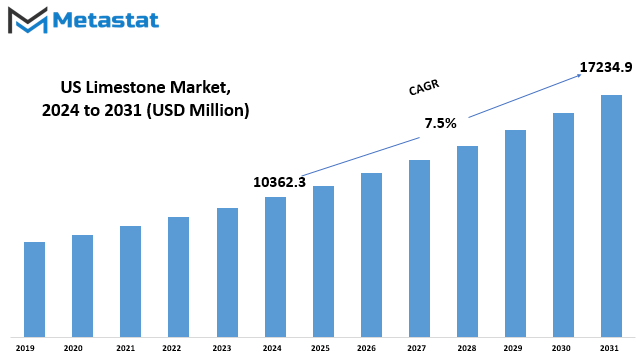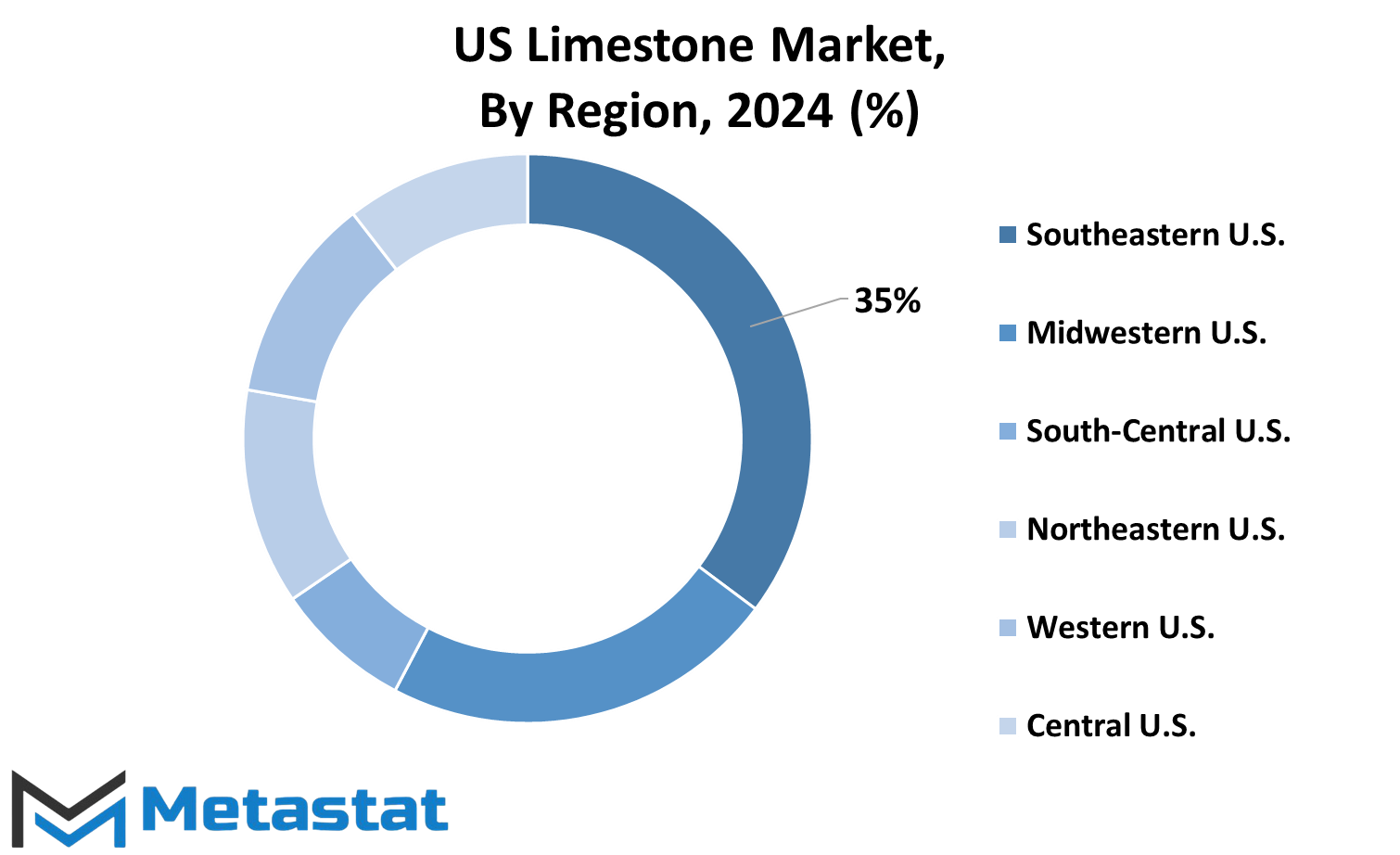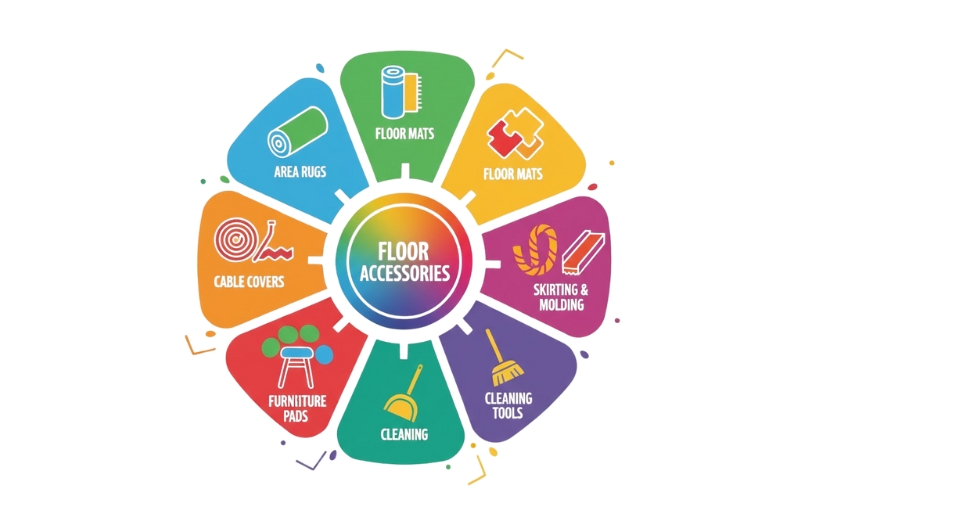MARKET OVERVIEW
The US Limestone market plays a vital role in the nation’s industrial landscape, shaping various sectors with its widespread applications. This robust industry contributes significantly to construction, agriculture, and manufacturing. Limestone, a sedimentary rock rich in calcium carbonate, serves as a cornerstone for diverse products and processes across the United States.
Primarily, the construction sector stands as a major beneficiary of the US Limestone market. The rock’s durability and versatility make it a preferred choice for building materials. From the grand facades of skyscrapers to the foundational blocks of residential structures, limestone’s enduring characteristics render it indispensable. Its application extends beyond conventional architecture to infrastructure projects like roads and bridges, where limestone aggregates enhance strength and longevity.
Moreover, agriculture relies on limestone for soil conditioning. Its calcium-rich composition mitigates soil acidity, fostering optimal conditions for crop growth. This agricultural application underscores the interconnectedness of the limestone market with food production, reflecting its indispensable role in sustaining the nation’s agricultural output.
The manufacturing sector further underscores the significance of the US Limestone market. Limestone’s chemical properties make it a key ingredient in various industrial processes. The production of glass, steel, and cement relies heavily on limestone as a fundamental raw material. The extraction and processing of limestone contributes to many products foundational to manufacturing, underscoring its integral role in industrial processes.
Beyond these major sectors, limestone finds use in water treatment, where its alkaline nature helps neutralize acidity. This critical application ensures the purification of water supplies, safeguarding public health. Limestone’s impact on environmental sustainability further extends to its use in scrubbers, where it aids in reducing emissions from power plants, exemplifying its role in mitigating industrial environmental impacts.
The US Limestone market's dynamism is propelled by a continual demand for its products across diverse sectors. As industries evolve and innovate, limestone adapts to meet new challenges and requirements. This adaptability positions the market as a linchpin in the national economic landscape, showcasing its resilience in the face of changing industrial needs.
The US Limestone market stands as a cornerstone in the nation’s industrial edifice, influencing construction, agriculture, and manufacturing. Its applications are deeply woven into the fabric of diverse industries, highlighting its irreplaceable role in supporting economic activities. As the nation progresses, the limestone market remains an enduring force, shaping the physical and economic foundations of the United States.
US Limestone market is estimated to reach $17234.9 Million by 2031; growing at a CAGR of 7.5% from 2024 to 2031.

GROWTH FACTORS
The US limestone market exhibits a dynamic landscape, influenced by various factors that shape its trajectory. In analyzing the sector, we observe key drivers, restraints, and opportunities that contribute to its overall dynamics.
One of the primary drivers propelling the US limestone market is the robust demand originating from the construction sector. This demand manifests across diverse projects, encompassing infrastructure, residential, and commercial developments. The construction industry’s vitality plays a pivotal role in steering the limestone market towards growth and sustainability.
Complementing this demand is the strategic involvement of government investments in infrastructure development and maintenance. As public initiatives fuel the construction momentum, the limestone market finds a solid foundation for expansion. These investments not only stimulate immediate growth but also establish a framework for long-term stability.
However, the market encounters challenges in the form of restraints. Environmental regulations and land-use restrictions pose significant hurdles for quarrying operations. The regulatory landscape, designed to ensure environmental preservation, necessitates careful navigation by industry stakeholders. Additionally, the bulk and weight of limestone materials contribute to high transportation costs, creating a restraint that industry players must contend with.
Amidst these challenges, opportunities arise, marking a pathway for innovative approaches within the industry. An increasingly favorable prospect lies in the growing utilization of recycled concrete and asphalt in crushed rock and limestone products. This trend aligns with the global shift towards sustainable construction practices, presenting an avenue for the limestone market to contribute to environmentally conscious initiatives.
The US limestone market unfolds with a blend of demand-driven growth, government intervention, regulatory challenges, and sustainability opportunities. Navigating this landscape requires a delicate balance, acknowledging the symbiotic relationship between industry dynamics and external influences. The market’s evolution hinges on the collective response to these elements, shaping a resilient and adaptive future for the US limestone sector.
MARKET SEGMENTATION
By Application
The US limestone market, when categorized by application, demonstrates distinct segments. Notably, the Industry lime segment held a value of 6115.8 USD million in 2023. This sector reflects the extensive use of limestone within various industrial applications. Likewise, the chemical lime segment, valued at 1549 USD million in the same year, showcases the significance of limestone in chemical processes.
Another integral facet of the limestone market is its role in construction. The construction lime segment plays a crucial part, contributing to the overall market dynamics. Additionally, the refractory lime segment adds another layer to the market landscape, emphasizing the diverse applications of limestone in refractory materials.
These segments collectively depict the multifaceted nature of the US limestone market, where limestone serves pivotal roles across industrial, chemical, construction, and refractory sectors. The market’s robustness is evident in the varying values associated with each segment, underlining the dynamic demand for limestone across these applications in 2023.
By End-user
In the United States, the limestone market exhibits a multifaceted landscape, with distinct segments catering to various industries. Among these, the Paper and Pulp industry stands out, commanding a valuation of 1644.4 USD Million in 2023. This sector relies on limestone for its unique properties that enhance paper production processes.
Another crucial player in the limestone market is the Water Treatment sector, which boasted a valuation of 2018.2 USD Million in 2023. Limestone plays a pivotal role in water treatment applications, contributing to the purification and conditioning of water resources. Its effectiveness in neutralizing acidity and removing impurities renders it indispensable in this field.
The agriculture segment is another noteworthy participant in the limestone market, recording a value of 1345.5 USD Million in 2023. Limestone finds utility in agriculture as a soil amendment, aiding in the correction of soil acidity and providing essential nutrients to enhance crop growth.
Similarly, the Plastics segment, valued at 1549 USD Million in 2023, relies on limestone for its diverse applications. Limestone acts as a filler and reinforcing agent in plastic products, contributing to their strength and durability.
The limestone market extends its influence into diverse realms, including Building and Construction, where its use in construction materials is significant. Moreover, the Steel and Energy sectors also benefit from limestone, employing it in various processes that contribute to their respective industries.
Beyond these highlighted segments, limestone plays a vital role in several other end-user industries. Its versatility and utility contribute to the growth and sustainability of sectors across the economic spectrum. As industries continue to evolve, the demand for limestone remains steadfast, underscoring its importance in supporting and shaping diverse sectors of the U.S. economy.
By Region
The US limestone market is categorized by region, specifically the Southeastern, Midwestern, South-Central, Northeastern, Western, and Central parts of the country. Each region plays a distinct role in shaping the overall dynamics of the limestone market. The Southeastern US, for instance, contributes to the market with its unique characteristics, as does the Midwestern region. The South-Central part of the country also has its impact on the limestone market, bringing in its own set of factors that influence the industry.
Moving towards the Northeastern US, this region adds another layer of complexity to the limestone market. The Western part of the country, with its specific attributes, contributes to the broader landscape of the market. Meanwhile, the Central US, with its distinct features, further diversifies the factors affecting the overall dynamics of the limestone market.
In understanding the US limestone market, it becomes apparent that each region plays a crucial role in shaping the industry’s landscape. The Southeastern, Midwestern, South-Central, Northeastern, Western, and Central parts collectively contribute to the varied factors influencing the market. This regional breakdown provides a comprehensive view, allowing stakeholders to grasp the nuanced interplay of elements within the US limestone market.

COMPETITIVE PLAYERS
The US limestone market boasts several noteworthy contenders in the industry. LafargeHolcim, Vulcan Materials Company, Martin Marietta Materials, Lehigh Hanson, Rogers Group Inc., Carmeuse Lime & Stone, Lhoist North America, CEMEX, United States Lime & Minerals, Inc., and Indiana Limestone Company stand out as key players shaping the landscape. These companies contribute significantly to the dynamism and competitiveness within the limestone sector.
LafargeHolcim, with its global presence, brings extensive experience and expertise to the US market. Vulcan Materials Company, a prominent player, stands firm in its commitment to delivering high-quality limestone products. Similarly, Martin Marietta Materials and Lehigh Hanson contribute to the market's vibrancy through their strategic operations and product offerings.
Rogers Group Inc. and Carmeuse Lime & Stone, recognized entities in the industry, play integral roles in meeting the diverse demands for limestone. Lhoist North America and CEMEX bring innovation and sustainability to the forefront of their operations, influencing industry trends. United States Lime & Minerals, Inc., with its specialized focus, contributes to the richness of the market.
Indiana Limestone Company, with its unique offerings, further diversifies the competitive landscape. The interplay of these companies not only underscores the competitive nature of the US limestone market but also highlights the collaborative efforts that drive growth and development in the industry.
The US limestone market is characterized by the active participation of these key players, each contributing distinct strengths to the sector. Their collective influence shapes the market dynamics, ensuring a competitive and thriving environment for the growth of the limestone industry in the United States.
Limestone Market Key Segments:
By Application
- Industry Lime
- Chemical Lime
- Construction Lime
- Refractory Lime
By End-user Industry
- Paper and Pulp
- Water Treatment
- Agriculture
- Plastics
- Building and Construction
- Steel and Energy
- Other End-user Industries
By Region
- Southeastern U.S.
- Midwestern U.S.
- South-Central U.S.
- Northeastern U.S.
- Western U.S.
- Central U.S.
Key US Limestone Industry Players
- LafargeHolcim
- Vulcan Materials Company
- Martin Marietta Materials
- Lehigh Hanson
- Rogers Group Inc.
- Carmeuse Lime & Stone
- Lhoist North America
- CEMEX
- United States Lime & Minerals, Inc.
- Indiana Limestone Company
WHAT REPORT PROVIDES
- Full in-depth analysis of the parent Industry
- Important changes in market and its dynamics
- Segmentation details of the market
- Former, on-going, and projected market analysis in terms of volume and value
- Assessment of niche industry developments
- Market share analysis
- Key strategies of major players
- Emerging segments and regional growth potential








 US: +1 3023308252
US: +1 3023308252






